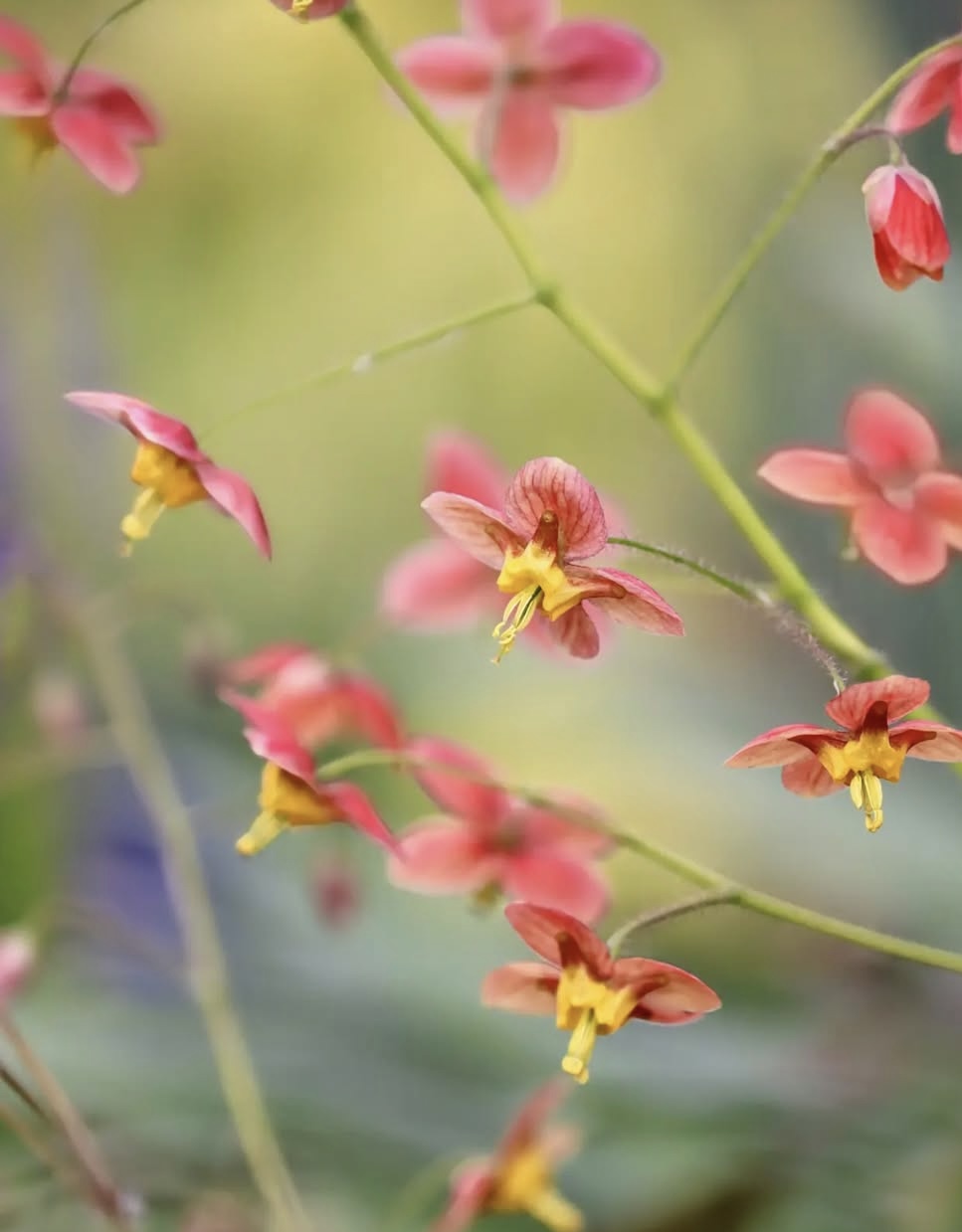Isle of Wight deliveries & Collections only

Epimedium x warleyense ‘Orangekönigin’
£4.50
Out of stock
Epimedium x warleyense ‘Orangekönigin’
A graceful groundcover with warm apricot-orange flowers in spring.
This enchanting perennial is one of the most eye-catching of the barrenworts, producing delicate star-shaped blooms in glowing shades of apricot, orange and soft copper, each with contrasting yellow centres. The flowers appear in airy sprays above neat mounds of heart-shaped foliage in April and May, bringing an unexpected splash of colour to shady spots. As the season progresses, the foliage develops subtle bronze tones, adding long-lasting interest.
‘Orangekönigin’ thrives in part to full shade and humus-rich, well-drained soil. It is clump-forming but slow spreading, making it a reliable choice for underplanting trees, brightening woodland gardens, or softening the edges of shady borders. Once established, it is surprisingly drought-tolerant and requires little maintenance beyond the removal of old leaves in late winter to make way for new spring growth.
Specifications
Type: Hardy semi-evergreen perennial
Height: 30–40 cm
Spread: 45–60 cm
Position: Partial to full shade
Soil: Moist but well-drained, fertile, humus-rich
Flowers: Spring, April–May
Hardiness: Fully hardy
🌿 Note for Isle of Wight planting
On the Isle of Wight, where dry shade under trees and hedges can be tricky to plant, this Epimedium is an invaluable choice. It shrugs off summer drought once established and keeps the ground covered where little else will thrive.
🌿 Ideal Companion Plants from The Green Standard Range
Helleborus orientalis hybrids – early blooms that overlap beautifully with Epimedium flowers
Brunnera macrophylla ‘Jack Frost’ – silvered foliage for shade that contrasts with Epimedium’s leaves
Pulmonaria ‘Blue Ensign’ – deep cobalt spring flowers that complement the warm apricot tones
Ferns (Dryopteris filix-mas) – lush green texture for layered woodland planting
🌟 The Green Standard Tip
Cut back the old leathery leaves in late winter before the flower stems appear, giving the delicate spring blooms space to shine.
